Greek island life revolves around the seasons and is punctuated by saints’ days and colorful religious festivals or panygeria.
Easter is the most important Orthodox festival of the year but there are lively pre-Lenten carnivals on some islands as well. The Greeks tend to mix piety and pleasure, with a great enthusiasm for their celebrations, from the biggest to the smallest village celebrations.
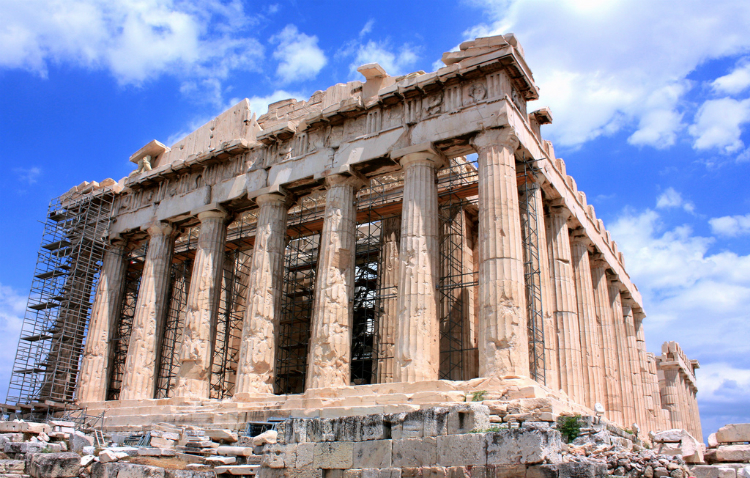 It is also common that there are also festivals that have ancient roots in pagan revels. Other festivals celebrate harvests or local produce, such as grapes, olives and corn, or re-enact various victories for Greece in its struggle for Independence.
It is also common that there are also festivals that have ancient roots in pagan revels. Other festivals celebrate harvests or local produce, such as grapes, olives and corn, or re-enact various victories for Greece in its struggle for Independence.
SPRING
The Greek word for spring is anoixi (the opening) and it marks the beginning of the tourist season on the islands. The islands in spring seems to be the most beautiful, covered with red poppies, camomile and wild cyclamen. Fruit trees are in full bloom, fishing boats and houses are freshly painted and people are at their most welcoming mood ready for the new season.
Orthodox Easter is the main spring event. While northern island archipelagos can be showery, by late April, Crete, the Dodecanese and east Aegean islands are usually warm and sunny.
March
Apokries, or Carnival Sunday (first Sun before Lent). There are festivals on many islands for even three weeks leading up to this date, the culmination of pre- Lenten festivities. Celebrations are exuberant at Agiasos on Lesbos and on Karpathos, while a goat dance is performed on Skyros.
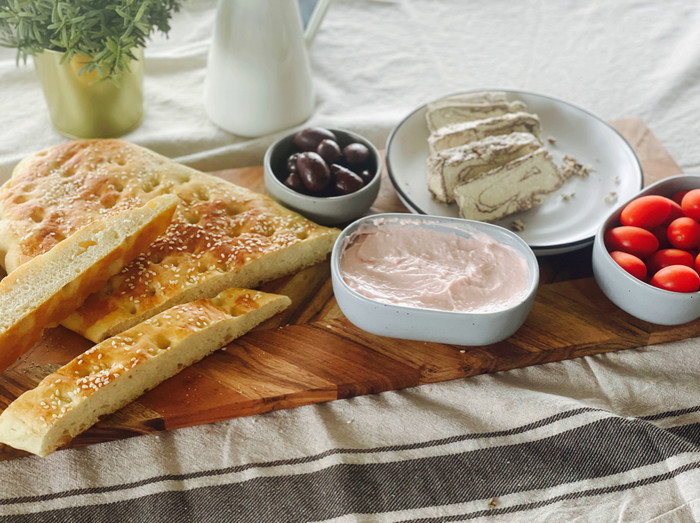 Kathari Deftera or Clean Monday (seven Sundays before Easter). This marks the start of Lent. Houses are spring- cleaned and the unleavened bread lagana is baked. Clean Monday is also the day for a huge kite- flying contest that takes place in Chalkida on Evvoia.
Kathari Deftera or Clean Monday (seven Sundays before Easter). This marks the start of Lent. Houses are spring- cleaned and the unleavened bread lagana is baked. Clean Monday is also the day for a huge kite- flying contest that takes place in Chalkida on Evvoia.
Independence Day and Evangelismos (25th March). It’s a national holiday, with parades and dances all over the country celebrating the 1821 revolt against the Ottoman empire. The religious festival, one of the Orthodox church’s most important, marks Archangel Gabriel’s announcement to the Virgin Mary that she was to become the Holy Mother. Name day for Evangelos and Evangelia.
April
Megali Evdomada, Holy Week (April or May) and the most important date in the Orthodox calendar, Pascha (Easter Sunday)
Agios Georgios, St. George’s day (23rd April). Agios Georgios is patron saint of shepherds. This day also marks the start of the grazing season in Greece.
May
Protomagia, May Day or Labour Day (May 1st). Traditionally, wreaths made with wild flowers and garlic are hung up repel the evil spirits. In major towns and cities, “workers” demonstrate on the streets asking for better working conditions.
Agios Konstantinos kai Agina Eleni (May 21st). A celebration all over the country dedicated to the saint and his mother, the first Orthodox Byzantine rulers.
Analipsi, Ascension (40 days after Easter, usually happens in May). This is also an important Orthodox feast day, celebrated across Greece.
CELEBRATING EASTER IN GREECE
Greek Orthodox Easter can fall up to three weeks before or after Western Easter. This is the most important religious festival in Greece, and Holy Week is a time for Greek families to come together. It is also a good time to visit Greece, to see the processions and church services and to sample Easter food. The ceremony and symbolism with Greece’s Byzantine past is more than obvious. There is also a link to some earlier pagan beliefs.
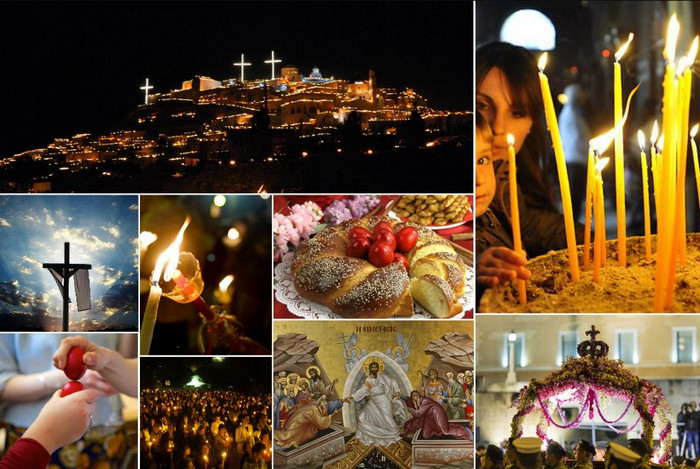 The celebrations will reach its peak at midnight on Easter Saturday when, as priests sing “Christ is risen”, fireworks explode leading to a Sunday of feasting, music and dancing. Feasting on roast meat marks the end of the Lenten fast, as well as a belief in the spring and new life.
The celebrations will reach its peak at midnight on Easter Saturday when, as priests sing “Christ is risen”, fireworks explode leading to a Sunday of feasting, music and dancing. Feasting on roast meat marks the end of the Lenten fast, as well as a belief in the spring and new life.
Particularly worthwhile visiting for the Holy Week processions and the Friday and Saturday night services are Olympos on Karpathos, Hydra, Patmos and any village on Crete.
Candle lighting will happen at the end of the Easter Saturday Mass. In complete darkness, a single flame is used to light all the other candles held by worshippers.
Egg loaves, made of sweet plaited dough, contains eggs with shells dyed red to symbolize the blood of Christ. It’s is a custom that on Sunday red eggs are given as presents.
Easter biscuits celebrate the end of Lent. Another Easter dish., mayeritsa soup, is made of lamb’s innards and is eaten in the early hours of Easter Sunday.
Roasting of the lamb is traditionally done outside on giant spits over charcoal, for lunch on Easter Sunday. The first retsina wine from last year’s harvest is opened and for dessert there are sweet cinnamon- flavored pastries.
SUMMER
With islands perched and sizzling, the tourist season is now in full swing. Villagers with hotels and rooms to let welcome first tourist of the season from the ferries and prices go up. The islands are cooled by the strong meltemi, a northerly wind from the Aegean. In June, the corn is harvested and different fruits like cherries, apricots and peaches are ripe.
In July herbs are gathered and dried, and figs are at their best.
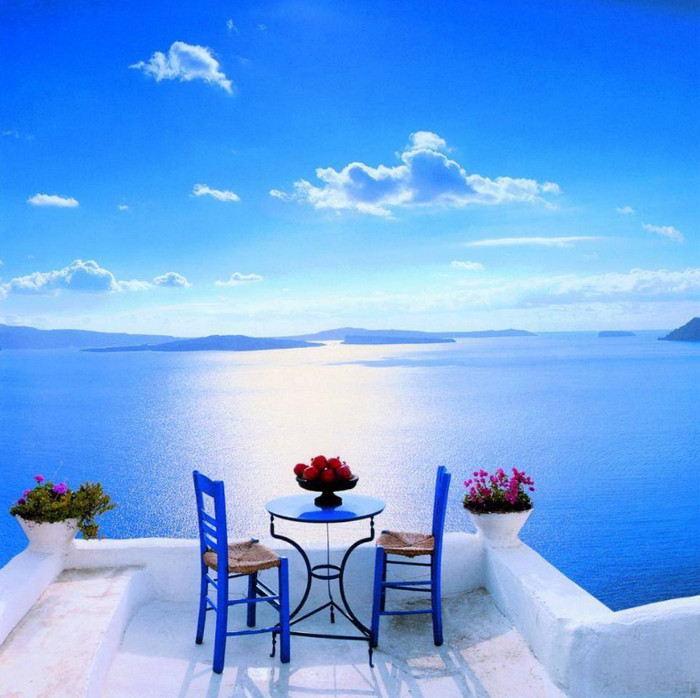 August sees a mass exodus from Athens from the islands, especially for the festival of the Assumption on 15 August.
August sees a mass exodus from Athens from the islands, especially for the festival of the Assumption on 15 August.
June
Pentikosti (seven weeks after Orthodox Easter), an important Orthodox feast day, celebrated throughout Greece.
Agious Pnevmatos, feast of the Holy Spirit, a national holiday.
Athens Festival (mid June- mid September), Athens. This is a cultural festival with a twist of modern and ancient theatre and music.
Klidonas (24th June) Chania, Crete. This festival celebrates the custom of water- divining for a husband. An amusing song is sung while the locals gather to dance.
Agios Ioannis, St. John’s day (24th June). On some islands, you will find bonfires lit on the evening before.
Agoi Apostoloi Petros kai Pavlos, Apostols Peter and Paul (29th June). There are celebrations at the dedicated churches, such as St. Paul’s Bay, Lindos, Rhodes.
Agioi Apostoli. Holy Apostols (30th June). The celebrations are intended for anyone named after one of the 12 apostols.
July
Agios Nikodimos (14th July) Naxos town. A small folk festival followed by the procession for the town’s patron saint.
Agia Marina (17th July). This day is widely celebrated in rural areas, with feasts to honor this saint. This saint saint is an important protector of crops and healer of snakebites. There are festivals throughout Crete and at the town of Agia Marina, Leros.
Profitis Ilias, the Prophet Elijah (18- 20th July). There are celebrations in the Cyclades, Rhodes and on Evvoia at the mountain-top chapels dedicated to the saint. The chapels were built on former sites of ancient Apollo temples.
Agiou Panteleimonos festival (25-28th Jul), Tilos. Three days of dance and song at Moni Agiou Panteleimonos. There are also celebrations at Moni Panachrantou, on the island of Andros.
Simonideia festival (1- 19th August), Kea. A celebration of the work of the island’s famous lyric poet, Simonides (556- 468 BC), with drama, exhibitions and dance.
Rethymno festival (Jul and August), Rethymno, Crete. This event includes a wine festival and Renaissance fair.
August
Ippokrateia, Hippocrates Cultural Festival (throughout August), Kos. Art exhibitions are combined with concerts and films, plus the ceremony of the Hippocratic Oath at the Asklepion.
Dionysia Festival (first week of August), Naxos town. A festival of folk dancing in traditional costume, with locals sharing free food and plenty of wine.
Metamorfosi, Transfiguration of Christ (August 6th). An important day in the Orthodox calendar, celebrated throughout the country. It is a fun day in Dodecanese, especially on the island of Chalki where you may get pelted with eggs, flour, yoghurt and squid ink.
Koimisis tis Theotokou, Assumption of the Virgin Mary (Aug 15th). This is a national holiday and together with Easter, the most important festival in the Orthodox calendar. Following the long liturgy on the night of the 14th, the icon of Madonna is paraded and kissed. Then the celebration proceeds and continues for days providing an excellent opportunity to experience traditional music and spontaneous dance. There are spectacular celebrations at Olympos on Karpathos with women wearing dazzling costumes.
AUTUMN
The wine making month of September and October are still very warm in the Dodecanese, Crete and the Cyclades although they can be showery further north and the sea can be rough. October sees the “little summer of St.Dimitrios”, a pleasant heatwave and warm days. This is also the time of the year when the first wine is ready to drink.
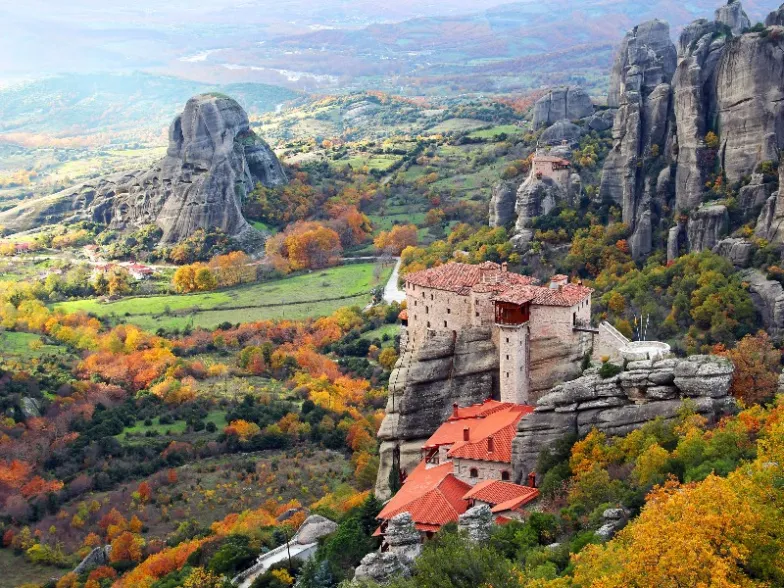 The shooting season begins and hunters take to hills in search of pigeon, partridge and other game. The main fishing season begins, with fish such as bream and red mullet appearing on restaurants menus. By the end of October, many islanders are heading for Athens, packing the ferries and wishing each other Kalo Chimona (good winter).
The shooting season begins and hunters take to hills in search of pigeon, partridge and other game. The main fishing season begins, with fish such as bream and red mullet appearing on restaurants menus. By the end of October, many islanders are heading for Athens, packing the ferries and wishing each other Kalo Chimona (good winter).
Traditional island life however, goes on: olives are harvested and strings of garlic, onions and tomatoes are hung to dry for the winter. Flocks of sheep are brought down from the mountain and fishing nets are mended.
September
Gennisis tis Theotokou, birth of Virgin Mary (8th September). This is an important feast day in the calendar of the Orthodox church.
Ypsosis tou Timiou Stavrou, Exaltation of the True Cross (Sep 14th). Even though it happens in autumn, this is regarded as the last of Greece’s summer festivals. The festivities are celebrated on Chalki.
October
Agios Dimitrios (26th October). A popular and widely celebrated name day. Traditionally, this is the day when the first wine of the year is ready to drink.
Ochi Day (28th Oct). A very important national holiday, with patriotic parades in the big cities and plenty of dancing. The day commemorates the famous reply by Greece’s prime minister of the time, Metaxas, to Mussolini’s 1940 call for Greek surrender: an emphatic no (ochi).
November
Ton Taxiarchon Michail kai Gavriil (8th Nov) Ceremonies at many monasteries named after Archangels Gabriel and Michael, such as at Panormitis, on Symi. This is an important name day all over the country.
Eisodia tis Theotokou, Presentation of the Virgin in the Temple (November 21st). A religious feast day and one of the most important days for the Greek Orthodox church. Name day for Maria, Mary.
WINTER
Lashed by strong, wild winds and high waves, the islands can be bleak in winter. Kefeneia are steamed up and full of men playing cards or backgammon. Women often embroider or crochet, and cook warming soups and stews. Fishermen celebrate Agios Nikolaos, their patron saint and then preparations go underway for Christmas.
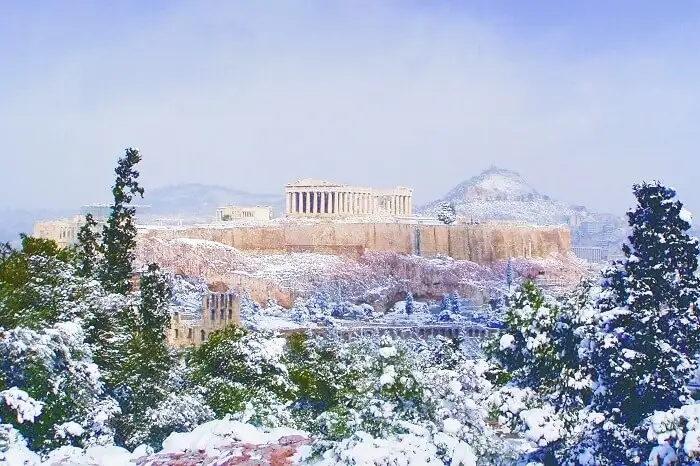 The 12- day holiday begins on Christmas eve, when the wicked goblins, kallikantzaroi, are about causing mischief, until the Epiphany in the new year, when they are banished. Pigs are slaughtered for Christmas pork, and women make the cakes representing the swaddling clothes of the infant. The Greek Father Christmas comes on New Year’s Day and special cakes called vasilopita are baked with coins inside to bring good luck to the finder.
The 12- day holiday begins on Christmas eve, when the wicked goblins, kallikantzaroi, are about causing mischief, until the Epiphany in the new year, when they are banished. Pigs are slaughtered for Christmas pork, and women make the cakes representing the swaddling clothes of the infant. The Greek Father Christmas comes on New Year’s Day and special cakes called vasilopita are baked with coins inside to bring good luck to the finder.
December
Agios Nikolaos (6th Dec). The celebration is held for the patron saint of sailors. Panigyyria (religious ceremonies) are held at harbour- side churches and decorated boats and icons are paraded on beaches.
Agios Spyridon (12 Dec), Corfu. A celebration for the patron saint of the island, accompanied with a parade of his relics.
Christougenna, Christmas (25th Dec). A national holiday. Even though it’s less significant than Easter in Greece, Christmas is still an important feast day.
Synaxis tis Theotokou, meeting of the Virgin’s entourage (26th Dec). A religious celebration throughout the country and a national holiday. The next day (27th Dec) is a popular name day for Stefanos and Stefania commemorating the saint Agios Stefanos.
January
Agios Vasileios, also known as Protochronia (1 Jan). A national holiday to celebrate this saint. Gifts are exchanged and the new year greeting is Kali Chronia.
Theofania, or Epiphany (6 Jan). A national holiday and an important feast day all over Greece. There are special ceremonies to bless the waters at coastal locations on many islands. A priest at the harborside throws a crucifix into the water. Young men then dive into the sea for the honor of retrieving the cross.
February
Ypapanti, Candlemas (2 Feb). An important Orthodox feast day throughout Greece. The festival celebrates the presentation of the infant Christ at the temple.
MAIN PUBLIC HOLIDAYS
These are the dates when all public sites are closed nationwide.
Agios Vasileios (1 Jan)
Evangelismos (25 March)
Protomagia (1 May)
Megali Paraskevi (Good Friday)
Pascha (Easter Sunday)
Christougenna (25 Dec)
Synaxis tis Theotokou (26 Dec)
NAME DAYS
In the past, most Greeks did not tend to celebrate their birthdays after the age of 12. Instead they celebrated their name days (giorti), the day of the saint after whom they were named at their baptism. Choice of names is very important in Greece, and children are usually named after their grandparents- though in recent years it has become fashionable to give children names from Greek history and mythology.
On St. George’s day or St. Helen day (21 May) the whole country seems to be in a festive mood, with guests coming in, bearing small gifts and being given cakes and liqueurs in return. On a friend’s name day you may be told Giortazi simera (I’m celebrating today)- the traditional reply is Chronia polla (many years). Today, most people also celebrate their birthdays, regardless of their age.